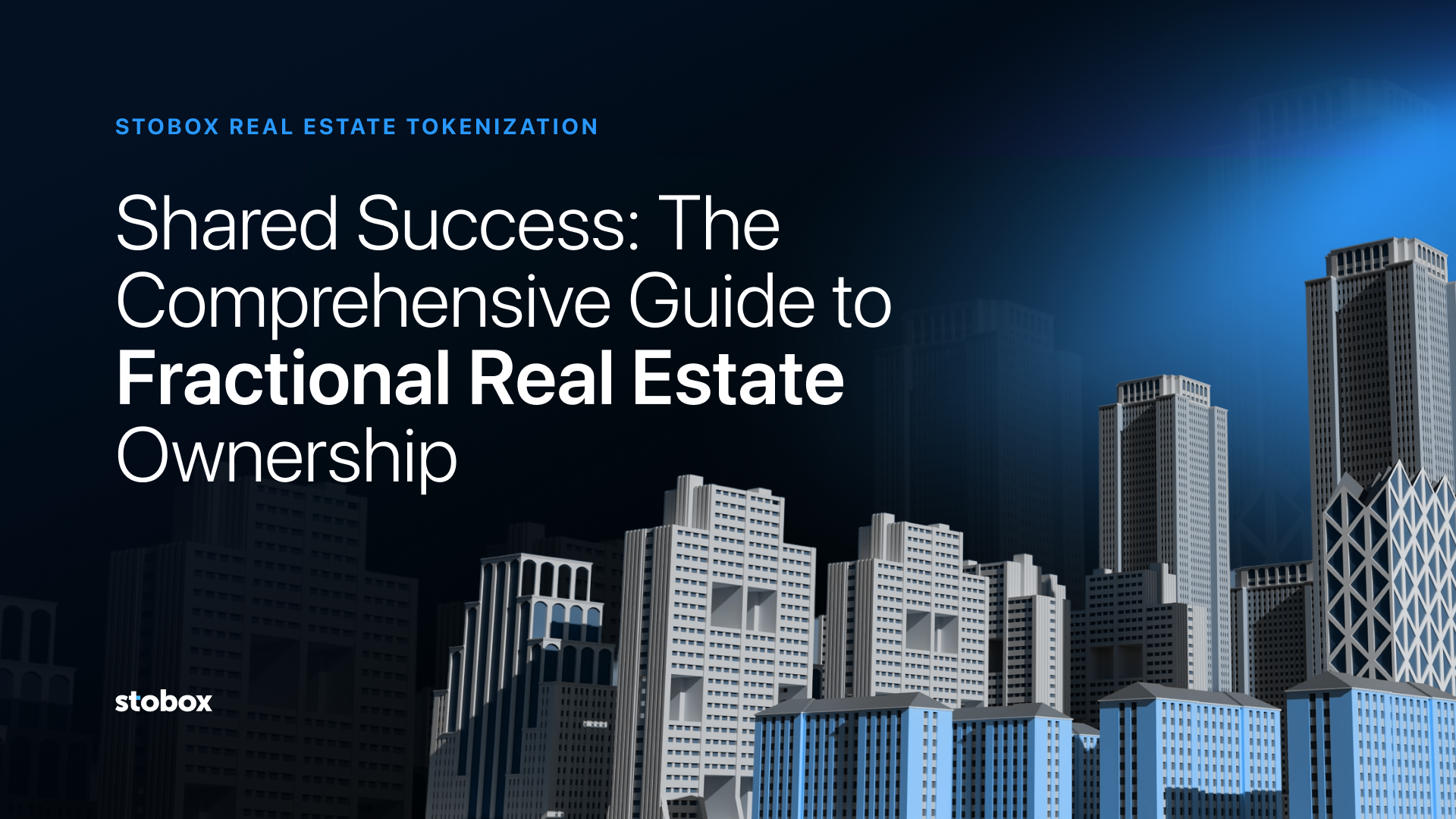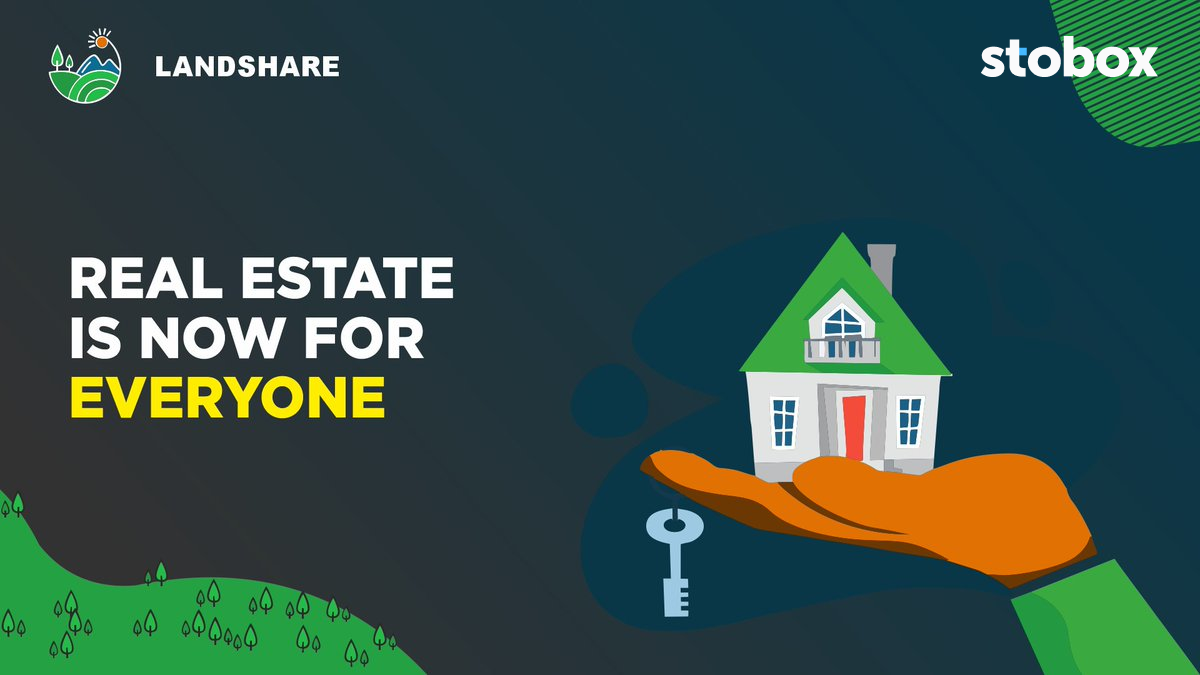Shared Success: The Comprehensive Guide to Fractional Real Estate Ownership
Explore fractional real estate ownership, the innovative investment trend reshaping property markets. Discover its benefits in our guide.

In recent years, the real estate landscape has witnessed a transformative trend: the rise of fractional real estate ownership. This concept, while not entirely new, has gained significant traction, offering a novel approach to property investment. But what exactly is fractional real estate ownership, and why is it catching the eye of modern investors?
Understanding the Concept
At its core, fractional real estate ownership is a strategy where multiple investors pool resources to purchase property shares.
It's a paradigm shift from the conventional norms of real estate investment, democratizing access to a market that was once the exclusive domain of the wealthy or institutional investors.
The Rise of Fractional Ownership in the Real Estate Market
The surge in popularity of fractional ownership can be attributed to several factors. In an era where the cost of living and property prices are skyrocketing, fractional ownership emerges as a viable alternative for those who dream of investing in real estate but are deterred by financial constraints. It lowers the entry barrier, enabling more people to participate in the property market.
Moreover, the digital revolution has played a pivotal role. Online platforms and blockchain technology have made it easier and more transparent, further fueling the growth of fractional ownership.
This innovative investment strategy is not just a fleeting trend; it's a reflection of the evolving real estate market adapting to meet the needs of today's investors. By understanding fractional real estate ownership, one can unlock new opportunities and explore alternative avenues in property investment.

As we venture further into the world of fractional real estate ownership, it becomes crucial to grasp its essence and operational framework. This chapter aims to demystify the concept and highlight how it stands apart from traditional real estate investment models.
Definition and Basic Principles
Fractional real estate ownership, at its simplest, is a method where multiple investors share ownership of a property. Instead of one individual or entity holding the entire property, it is divided into smaller, more affordable shares. Each investor owns a fraction of the property, which corresponds to their investment amount. This method is not merely about sharing the cost; it's about sharing the ownership, responsibilities, and benefits that come with the property.
The basic principle behind fractional ownership is collective investment and shared benefits. Investors pool their resources to acquire property that might otherwise be beyond their individual financial reach. This collective approach allows for a diversified investment portfolio and opens the door to more significant, potentially more lucrative real estate opportunities.
How It Differs from Traditional Real Estate Investment
Traditional real estate investment typically involves an individual or a single entity purchasing a property in its entirety. This approach often requires substantial capital, making it less accessible to the average person. The full ownership model also means complete responsibility for maintenance, management, and any financial burdens, such as mortgages or taxes associated with the property.
In contrast, fractional ownership democratizes the investment process.
Furthermore, fractional ownership offers a level of flexibility rarely found in traditional real estate investments. Investors can choose how much they want to invest and select from a wider range of properties. They can also decide to sell their shares or buy more in the property as their financial situation changes.

Having understood what fractional real estate ownership is and how it differs from traditional methods, it's crucial to explore the benefits it offers. Fractional ownership is not just an alternative investment strategy; it's a game-changer for many potential investors. This chapter delves into the key advantages that make fractional ownership an attractive option.
Affordability and Accessibility
The most immediate benefit of fractional real estate ownership is its affordability. By dividing the cost of a property into smaller shares, it significantly lowers the entry barrier to real estate investment. This democratization of property investment makes it accessible to a broader audience, including those who might have found traditional real estate investment prohibitively expensive.
Accessibility is not just about the financial aspect. Fractional ownership simplifies the investment process, making it more approachable for first-time investors or those unfamiliar with the real estate market. With less capital at risk and the complexities of property management and maintenance largely handled by professional firms, investors can venture into real estate with greater confidence and ease.
Diversification of Investment Portfolio
Diversification is a cornerstone of sound investment strategy, and fractional ownership allows investors to achieve this with greater ease. Instead of committing a large sum to one property, investors can spread their investment across multiple properties or different types of real estate, such as residential, commercial, or vacation homes.
Flexibility and Reduced Responsibilities
Fractional ownership offers flexibility not just in investment size, but also in terms of commitment. Investors can choose to sell their shares or invest more at their convenience. This flexibility is particularly appealing in a volatile market, where the ability to adjust investment levels quickly can be a significant advantage.
Another appealing aspect is the reduced responsibilities that come with fractional ownership. Traditional property ownership involves significant commitments in terms of maintenance, management, and dealing with tenants. In a fractional ownership model, these tasks are typically handled by a professional management company, freeing investors from the day-to-day burdens of property management.

With a clear understanding of the benefits of fractional ownership, the next step is to delve into how it actually works. This chapter outlines the process of investing in fractional real estate, the management of the property, and the distribution of returns, providing a practical roadmap for potential investors.
The Process of Investing
The journey into fractional real estate investment typically begins with identifying a suitable property or a project offered by a company specializing in fractional ownership. These properties are often pre-vetted by experts for their investment potential. Once an investor decides on a property, they purchase shares corresponding to their investment capacity.
The amount invested dictates the percentage of ownership of the property. For example, if a property is worth $1 million and an investor puts in $50,000, they own 5% of the property. This percentage reflects their stake in both the property's value and the income it generates, such as rent.
Managing the Property
One of the significant advantages of fractional ownership is the professional management of the property. This management typically includes finding tenants, maintaining the property, handling legal paperwork, and ensuring compliance with regulations. The management company acts on behalf of all investors, ensuring that the property is well-maintained and profitable.
This hands-off approach is particularly appealing to investors who may lack the time or expertise to manage real estate. It allows them to reap the benefits of property ownership without the day-to-day hassles.

Sharing the Returns
The returns from fractional real estate investment come in two forms: rental income and capital appreciation. Rental income is distributed among the investors based on their ownership percentage. For instance, if a property generates $10,000 in rent monthly and an investor owns 5% of the property, they would receive $500.
Capital appreciation refers to the increase in the property's value over time. When the property is sold, the profit is shared among the investors according to their respective shares. This long-term appreciation can be a significant source of income, especially in markets with high growth potential.

Fractional real estate ownership is not a one-size-fits-all proposition; it spans a variety of property types, each with its unique characteristics and investment potential. In this chapter, we'll explore the different types of properties commonly involved in fractional ownership, providing insights to help investors make informed decisions.
Residential Properties
Residential properties are a popular choice for fractional ownership due to their familiarity and the consistent demand for housing. This category includes single-family homes, apartments, and townhouses. Investors are drawn to residential properties because of their potential for steady rental income and long-term value appreciation. Moreover, residential properties can be more resilient to economic fluctuations compared to commercial real estate, offering a level of stability to investors.
Commercial Properties
Commercial properties in fractional ownership typically involve office spaces, retail outlets, and industrial facilities. These investments can offer higher rental yields compared to residential properties, but they also come with increased risk. The success of commercial properties often hinges on the broader economic climate, making them more susceptible to market downturns. However, for investors looking to diversify their portfolio and willing to take on a bit more risk, commercial properties can be a lucrative option.
Vacation Homes
Vacation homes represent a unique segment in fractional ownership. These properties, located in tourist destinations or scenic locales, offer the dual benefit of personal use and investment. Investors can enjoy the property during designated times of the year and earn rental income when it’s rented out to others.

While the rental income can be seasonal, vacation homes can be an excellent way for investors to own a piece of a luxury property at a fraction of the cost, along with enjoying personal leisure benefits.

Understanding the types of fractional real estate investments leads us to an important question: Who is the ideal candidate for fractional ownership? This chapter aims to identify the profile of investors for whom fractional real estate ownership is most suitable, guiding you to assess whether this investment strategy aligns with your personal goals and circumstances.
Ideal Candidates for Fractional Investments
Fractional ownership is particularly appealing to a diverse range of investors, each with unique motivations:
- First-Time Investors
Individuals who are new to real estate investment and seeking an accessible entry point will find fractional ownership an ideal start. It offers a lower risk profile compared to buying a whole property and provides a learning experience in real estate investment without overwhelming financial commitment. - Small to Medium Capital Investors
Those who have some investment capital but not enough for a full property purchase can benefit from fractional ownership. It allows them to enter the real estate market and potentially diversify their investment portfolio across different types of properties. - Investors Seeking Diversification
Experienced investors looking to diversify their portfolios will find value in fractional ownership. It allows them to spread their risk across various properties or geographies, enhancing their investment stability. - Busy Professionals
Individuals who want to invest in real estate but lack the time or desire to manage properties will appreciate the hands-off nature of fractional ownership, where professional management handles the day-to-day operations. - Retirees or Passive Income Seekers
Those looking for a steady stream of passive income, such as retirees, can benefit from the regular rental returns that fractional properties often provide.
Assessing Personal Investment Goals
Before diving into fractional ownership, it's crucial for potential investors to assess their investment goals and risk tolerance. Considerations should include:
- Financial Objectives
Are you looking for short-term gains, long-term appreciation, or steady rental income? - Risk Appetite
How much financial risk are you willing to take on? - Investment Horizon
Do you have a short, medium, or long-term investment outlook? - Level of Involvement Desired
Are you interested in being actively involved in property management, or do you prefer a more passive role?

Entering the realm of fractional real estate ownership requires an understanding of its legal and financial intricacies. This chapter focuses on the key legal frameworks and financial implications investors must consider to make informed and compliant decisions.
Understanding the Legal Framework
The legal aspect of fractional real estate ownership involves understanding the structure of ownership, the rights of investors, and the regulatory environment. Here are some critical points:
- Ownership Structure
Typically, fractional ownership is structured through a legal entity such as a Limited Liability Company (LLC) or a partnership. Each investor owns a share of this entity, which in turn owns the property. This structure provides clarity on each investor's rights and responsibilities. - Regulatory Compliance
Fractional ownership must comply with local real estate laws, securities regulations, and taxation rules. It's crucial for investors to be aware of these regulations to ensure that their investment is legally sound. - Agreements and Contracts
Clear legal agreements are essential in fractional ownership. These should cover aspects like the distribution of rental income, management of the property, the process for selling shares, and the resolution of disputes among investors. - Exit Strategies
Understanding the legal process for exiting the investment, whether by selling shares back to the company or to another investor, is crucial. The legal framework should define this process to avoid future complications.
Financial Implications and Costs Involved
Fractional ownership also involves various financial considerations:
- Initial Investment
The amount required to buy a share in the property. This is typically lower than the capital needed for buying a property outright. - Ongoing Costs
These include maintenance fees, management fees, and property taxes. Investors should be aware of these recurring costs and how they will be shared among co-owners. - Return on Investment (ROI)
Understanding the potential ROI is crucial. This includes rental income and capital appreciation. Investors should have realistic expectations and consider market trends. - Financing Options
Some fractional ownership opportunities may offer financing options. Understanding the terms of these options, including interest rates and repayment schedules, is important. - Tax Implications
Investors should be aware of the tax implications of their investment, including income tax on rental earnings and capital gains tax.

The integration of technology in fractional real estate ownership has been a game-changer, simplifying processes and enhancing transparency. In this chapter, we explore how technological advancements are shaping the landscape of fractional ownership, making it more accessible and efficient for investors.
Digital Platforms and Blockchain
- Online Investment Platforms. The rise of digital platforms has revolutionized the way investors engage with fractional real estate. These platforms offer a user-friendly interface where investors can browse properties, assess investment potential, and complete transactions online. They provide detailed information about properties, investment terms, and legal documents, all accessible with a few clicks.
- Blockchain Technology. Blockchain is increasingly being adopted in the real estate sector, particularly in fractional ownership. It offers a secure and transparent way to record transactions, ownership details, and property history. Smart contracts, powered by blockchain, automate and enforce the terms of an agreement, reducing the need for intermediaries and enhancing trust among all parties.

How Technology Simplifies the Process
Technology simplifies the fractional ownership process in several ways:
- Ease of Access
Investors can access a global property market from their devices, breaking geographical barriers. This accessibility broadens investment opportunities beyond local markets. - Streamlined Transactions
The investment process, from due diligence to the final purchase, is streamlined through technology. Digital platforms often handle the majority of paperwork and transactions, making the process more efficient. - Real-time Information and Analytics
Investors have access to real-time data and analytics about their investments. This information allows for better-informed decisions and timely responses to market changes. - Community Building
Some platforms offer forums or communities where investors can share insights, experiences, and advice. This community aspect fosters a sense of collaboration and learning among fractional investors.

While fractional real estate ownership offers numerous benefits, like any investment, it's not without its risks and challenges. Understanding these is crucial for making informed decisions and mitigating potential downsides. In this chapter, we'll explore the common risks and challenges associated with fractional ownership and how to navigate them.
Market Risks and Uncertainties
- Property Market Fluctuations
The real estate market is subject to cyclical fluctuations. While fractional ownership allows for diversification, it's still vulnerable to broader market trends, including economic downturns and changes in property values. - Liquidity Concerns
Unlike stocks or bonds, real estate is not a highly liquid asset. Selling a fractional share might take longer, especially in a sluggish market, affecting the investor's ability to quickly liquidate the investment. - Interest Rate Variability
Changes in interest rates can impact property values and the cost of borrowing. Investors need to be aware of how shifts in the financial landscape could affect their investments.
Dealing with Co-owners
- Management Disagreements
Co-ownership means decisions about the property are shared. Differences in opinion regarding property management, maintenance, or sale can arise, leading to potential conflicts. - Reliability of Co-investors
The financial commitment of each co-owner is crucial. If one investor fails to meet their financial obligations, it can impact others, particularly in terms of shared costs like maintenance and taxes.
Exit Strategies
- Selling Shares
Selling fractional shares can be more complex than selling a whole property. The market for fractional shares may be smaller, and finding a buyer might take time. - Agreement Terms
The terms of the fractional ownership agreement may include clauses that make exiting the investment more complicated. It's important to understand these terms thoroughly before investing.

To fully appreciate the value of fractional real estate ownership, it's essential to compare it with other investment options. This chapter offers a comparative analysis, highlighting the similarities and differences, to help investors make well-informed decisions.
REITs vs. Fractional Ownership
- Nature of Investment
Real Estate Investment Trusts (REITs) are companies that own or finance income-producing real estate across a range of property sectors. Investors buy shares of these companies, making REITs more like stock investments. Fractional ownership, on the other hand, involves direct investment in a specific property. - Level of Control
REIT investors have no direct control over the properties or their management. In contrast, fractional ownership often allows for more direct involvement in decision-making processes regarding the property. - Investment Liquidity
REITs are generally more liquid compared to fractional real estate, as shares can be bought and sold on the stock market. - Income and Appreciation Potential
Both offer potential rental income and capital appreciation, but the direct nature of fractional ownership might offer more tangible benefits tied to specific properties.
Traditional Ownership vs. Fractional Ownership
- Capital Requirement
Traditional ownership requires significant capital investment for the entire property, while fractional ownership allows for investment in smaller, more manageable shares. - Management Responsibilities
Traditional owners bear the full responsibility for property management and maintenance. Fractional ownership, especially when managed by a professional company, reduces these burdens. - Risk Diversification
Owning an entire property concentrates risk in a single investment, whereas fractional ownership allows for diversification across multiple properties or types of real estate. - Flexibility
Fractional ownership provides greater flexibility in terms of investment amount and commitment, making it more accessible to a wider range of investors.

To illustrate the potential of fractional real estate ownership, it's inspiring to look at real-world success stories. These examples not only demonstrate the viability of this investment approach but also offer valuable insights and lessons. In this chapter, we delve into some notable success stories, showcasing the diverse opportunities and achievements within the fractional real estate market.
Real-life Examples
- Urban Residential Developments
One success story comes from a group of investors who ventured into urban residential properties through fractional ownership. By pooling their resources, they were able to invest in a high-demand city area, a market typically out of reach for individual investors. The property not only provided steady rental income but also appreciated significantly over time, resulting in substantial returns for the investors. - Vacation Properties in Tourist Hotspots
Another success involves fractional ownership in a vacation property located in a popular tourist destination. The investors enjoyed personal use of the property and also benefited from rental income during peak tourist seasons. The property's value increased due to its desirable location, leading to a profitable sale a few years later. - Commercial Property Revitalization
A group of fractional investors invested in a commercial property that required renovation. After revitalizing the property and attracting high-quality tenants, the property's value and rental income increased substantially, generating impressive returns for the investors.

Lessons Learned
These success stories highlight several key lessons:
- Market Research is Crucial
Understanding the market dynamics and choosing the right property is fundamental to success in fractional real estate investment. - Diversification Pays Off
Investing in different types of properties and locations can spread risk and increase the potential for success. - Patience is Key
Real estate investment often requires a long-term perspective. The most significant gains are usually realized over extended periods. - Professional Management Matters
Effective management of the property can significantly impact its success, making the choice of a management company a critical decision.

As we look ahead, the future of fractional real estate investment appears bright and full of potential. This chapter explores the emerging trends, potential growth areas, and what the future may hold for investors considering fractional ownership in the real estate market.
Trends and Predictions
- Technological Advancements
The continued integration of technology, especially blockchain and AI, is expected to further streamline the fractional ownership process. These advancements will enhance transparency, security, and ease of transactions, attracting a broader base of investors. - Global Market Access
With digital platforms breaking down geographical barriers, investors will increasingly have opportunities to invest in properties worldwide, diversifying their portfolios beyond local markets. - Increased Popularity Among Millennials and Gen Z
Younger generations, who may be priced out of traditional real estate markets, are likely to embrace fractional ownership as a viable investment option. Their comfort with digital platforms and interest in alternative investment forms will drive growth in this sector. - Sustainable and Eco-Friendly Properties
There's a growing interest in sustainable and environmentally friendly properties. Fractional ownership may become a popular way to invest in such properties, aligning investment goals with environmental consciousness.
Potential Growth Areas
- Urban Residential Properties
As cities continue to grow and attract residents, urban residential properties are likely to remain a hotbed for fractional investment, offering both rental income and appreciation potential. - Vacation and Leisure Properties
With the travel and leisure industry rebounding, vacation homes and leisure properties in popular destinations may see increased interest from fractional investors. - Commercial and Mixed-Use Developments
As the economy recovers and evolves, commercial properties, especially those in mixed-use developments, could offer lucrative opportunities for fractional investors.
The Increasing Role of Regulation
As fractional ownership gains popularity, regulatory frameworks will likely evolve to provide clearer guidelines and protections for investors. This evolution will be crucial in maintaining investor confidence and ensuring the stability of the investment model.

As prospective investors consider the realm of fractional real estate investment, the expertise and services of turn-key tokenization providers like Stobox can be invaluable. This chapter integrates the advice of seasoned professionals and highlights how Stobox's expertise and technology can enhance the fractional real estate investment experience.
Leveraging Stobox for Fractional Real Estate Investment
Stobox stands out as a pivotal player in the digital securities and tokenization field, presenting a range of services that greatly enhance the experience of fractional real estate investment:
- Expertise in Asset Tokenization
At its core, Stobox excels in the tokenization of various assets, including real estate properties. Stobox adeptly transforms property ownership into digital tokens, revolutionizing the approach to managing fractional ownership with cutting-edge efficiency. - Simplification of Investment Procedures
Stobox's Tokenized SaaS Platform refines and eases the investment process in fractional real estate. By demystifying the complexities typically associated with such investments, they provide a seamless and user-intuitive interface for investment management. - Assured Transparency and Security
Leveraging blockchain technology, Stobox guarantees heightened transparency and security for all transactions. This assurance allows investors to monitor their investments with confidence, secure in the knowledge that their assets are well-protected and meticulously managed. - Access to an Array of Tokenized Properties
Stobox tokenized numerous real estate clients who offer a selection of tokenized properties. This partnership provides investors with the opportunity to explore and invest in a diverse range of tokenized real estate options, facilitating portfolio diversification across various property types and locations.


As we conclude our exploration of fractional real estate ownership, it's clear that this innovative investment model offers a unique blend of accessibility, flexibility, and potential for diversification. This final chapter summarizes the key points discussed and offers final thoughts for those considering fractional real estate as an investment option.
Summarizing the Potential of Fractional Real Estate
Fractional real estate ownership has emerged as a viable and attractive investment strategy, especially in a market where traditional property ownership may be out of reach for many. It democratizes real estate investment, allowing individuals to participate in the property market with a lower financial threshold. The model's flexibility, reduced management responsibilities, and potential for diversification make it an appealing choice for a wide range of investors, from novices to seasoned veterans.

The integration of technology in fractional ownership has streamlined the investment process, providing greater transparency, efficiency, and global accessibility. This evolution is likely to continue, further enhancing the appeal and functionality of fractional real estate investment.
However, like any investment, fractional real estate comes with its own set of risks and challenges. Market fluctuations, liquidity concerns, and the complexities of co-ownership are factors that require careful consideration. Prospective investors should approach fractional real estate with a well-informed, strategic mindset, taking into account the expert advice and success stories that underscore the importance of research, diversification, and long-term planning.
Final Thoughts for Prospective Investors
For those considering fractional real estate investment, it's essential to align your investment with your financial goals, risk tolerance, and investment horizon.
Fractional real estate ownership presents a promising opportunity to enter the property market, offering the potential for both rental income and capital appreciation. With the right approach, it can be a valuable addition to your investment portfolio, contributing to your financial growth and stability.
As the real estate market continues to evolve, fractional ownership stands as a testament to the innovative ways in which investors can adapt and thrive in changing economic landscapes. Embracing its potential could open new doors for personal and financial achievements in the world of real estate.



